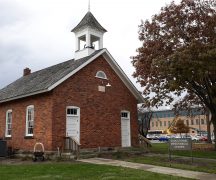Ohio Capital Journal
Will the rich get richer?
If census data collection ended today, they would. With few exceptions in Ohio, you can predict a county’s census response rate just by looking at how well-off its citizens are financially.
Poorer counties tend to have much lower response rates than richer ones. With so much on the line — congressional representation, funding allocation to local communities — this disparity could lead to some places getting left behind.
That’s why census organizers are setting out to close that gap and improve response rates in all corners of the state.
The census response timeline extended due to the COVID-19 pandemic, meaning there is still plenty of time for Ohioans to make sure they are counted.
Income and census responses intertwined
There is a definite connection between economic data and census response rates, a review from the Ohio Capital Journal shows.

The statewide median household income is $54,533 per year. A total of 66.1% of Ohio households had responded to the census as of June 14.
Thirty-six counties in Ohio have a median household income that is higher than $54,533. Of those 36, a total of 30 counties (83%) have higher census response rates than the statewide figure.
In contrast, 52 counties in Ohio have a median household income that is lower than $54,533. Of those 52, a total of 37 counties (71%) have lower census response rates than the statewide figure.
These are all totals from the U.S. Census Bureau as of June 14.
Wood County, which has a higher household income, $59,789 as of 2018, and a higher response rate of 69 percent. See chart with all counties.
Closing the gap
Nearly every county designated as being in Appalachia has a lower response rate compared to the rest of Ohio.
A communications firm from Southeast Ohio wanted to fix that. Sunday Creek Horizons sought out funding for a PSA campaign and eventually received a $44,000 grant to carry out that project.
The company is using the money to buy Facebook advertisements targeting residents in 22 different counties. The ads will feature videos from recognizable faces in politics and culture explaining the importance of the U.S. Census and how residents can fill it out.
Those who have sent in videos include former Cincinnati Mayor Jerry Springer, former Gov. Ted Strickland, U.S. Rep. Brad Wenstrup and both U.S. Sens. Rob Portman and Sherrod Brown. A number of local officials in the region have participated also, such as New Concord Mayor Jennifer Lyle in Muskingum County and Steve Neal, a county commissioner in Ross County.
The company also plans to send audio clips to radio stations throughout the region to use as PSAs during ad breaks.
Susan Licate, a spokesperson for the U.S. Census Bureau, said the government is keeping track of which areas have better response rates than others. There is a database of response rates broken down by state, county, city and even individual townships.
“Because we can see real-time tract-level response rates updated daily, the Census Bureau can work closely with local partners and fine-tune our outreach,” Licate said.
Why the Census matters
The U.S. Census is conducted every 10 years and has an impact on regular citizens’ lives.
Response rates can greatly affect a community’s finances. Federal funding is allocated to state and local governments based on Census data. This includes funding for Head Start, WIC, Meals-on-Wheels, highway construction and many other projects and programs.
“Our message is this,” Zach Reizes with Sunday Creek Horizons told the Ohio Capital Journal, “for every person who is not counted in the U.S. Census, your local community loses thousands of dollars in funding for roads, bridges, schools, community improvement.”
The count also affects a community’s political representation.
The U.S. House of Representatives features 435 districts all across the country, including 16 currently in Ohio. They are drawn so that each member of Congress represents roughly the same number of constituents.
That number of districts never changes, but of course America’s population continues to change — as do the populations of each state.
The Census helps to adjust these districts every 10 years. If a community has a low response rate, that could lead to it being underrepresented when determining the new district maps.
The 2020 Census timeline and how you can fill it out
Households can fill out the Census form via phone, mail or online until Oct. 31.
Census takers will be going door-to-door to conduct interviews with households that have not yet responded from Aug. 11 through Oct. 31.
- Mail — Households received a full questionnaire by mail in the spring. They include a return envelope with an address to a Census Bureau processing center in Jefferson, Indiana or Phoenix, Arizona.
- Online — Visit 2020census.gov to complete the census form online. The form must be completed in one sitting. You will receive a confirmation page to indicate you are finished.
- Phone — Americans are invited to call 844-330-2020 to complete the questionnaire by phone. There are other phone numbers available to respond in other languages besides English; a list is available online here.





